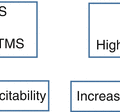© Springer International Publishing AG 2018
Stefano Masiero and Ugo Carraro (eds.)Rehabilitation Medicine for Elderly PatientsPractical Issues in Geriatricshttps://doi.org/10.1007/978-3-319-57406-6_2929. Rehabilitation for Older Patients with Musculoskeletal Oncologic Disease
(1)
Department of Orthopedics and Orthopedic Oncology, University of Padua, Padua, Italy
29.1 Introduction
If rehabilitation program of patients with orthopedic pathology collaboration between physicians (orthopedic surgeon, physiatrist, physiotherapist, and rehabilitation nurse) is important, the multidisciplinary team is essential in patients with orthopedic oncology pathology. The rehabilitation process in oncologic patient should be placed inside the oncologic treatments (chemotherapy and radiotherapy) and the follow-up check visits. Moreover, despite the progresses in treatment of cancer patients, considering the psychological implications in these patients, in their relatives, and in healthcare professionals is fundamental.
29.2 Malignant Bone Tumors
Metastasis, myeloma, and chondrosarcoma are the most frequent malignant bone lesions in older patients (>50 years old) [1].
The skeleton is the third site for metastases after the lung and liver, and the first cause of bone metastasis is due to visceral carcinomas as breast, lung, prostate, and kidney, followed by cancer of the digestive system, bladder, thyroid, and uterus [1–6]. About 15–20% of all carcinomas clinically manifests bone metastasis, whose incidence is increased in the last decades due to rise of cancer patients in relation with early diagnosis and with improvement of the surgical and medical treatments resulting in higher survival of patients. The most frequent sites for skeletal metastasis are the spine, pelvis, proximal femur, and proximal humerus, even if any bone can be affected [1–7].
Myeloma is a hematologic malignant bone marrow tumor, originating from B-lymphoid cells and differentiating in plasma cells that produce specific monoclonal proteins [1]. Myeloma can be multiple or solitary (plasmacytoma) and usually affects patients older than 60 years old. It involves especially the spine, skull, ribs, and the meta-epiphyses of appendicular long bones, particularly proximal femur and proximal humerus.
Chondrosarcoma is the most frequent primary malignant bone tumor in adult patients with a pick age of incidence between 40 and 70 years [1]. It is predominant in limb girdles and in the knee, involving usually diaphysis or metaphysis of the long bone as proximal femur, proximal humerus, distal femur, and proximal tibia.
Surgical and rehabilitation treatments are similar in patients with metastasis and myeloma, while patients with chondrosarcoma require different strategy due to more higher chances to heal.
Surgical treatment consists especially in resection of affected bone and reconstruction with modular prosthesis that allows repairing any bone defect [2–26]. Cemented stem is used in case of bone metastasis or myeloma or if the bone is osteoporotic [2–6], while press-fit stem is used in case of primary bone tumor [11, 24, 26]. Nowadays, custom-made 3D-printed prostheses are also available to reconstruct pelvic defect in order to ensure a more anatomic reconstruction [8]; modular total reverse shoulder prostheses could be used after proximal humerus resection (if to save the deltoid muscle with its innervation is feasible) in order to obtain better functional results [13–20].
29.3 Rehabilitation After Resection and Reconstruction for Bone Tumor
The rehabilitation program aims to shorten recovery time in patients with metastasis and myeloma; while it should get stable long-term results in patients with chondrosarcoma, given that these patients have about 90% of chance to heal.
29.3.1 Rehabilitation Program After Proximal Humerus Resection and Reconstruction with Standard Modular Prosthesis [4, 13, 14, 19]
Standard modular shoulder prostheses are spacers that allow to preserve movements of the elbow, hand, and wrist; shoulder range of motion is limited at only few degrees of anteposition. The patient has to wear a Velpeau brace for 4 weeks in order to permit the remaining soft tissue healing avoiding dislocation of prosthesis. An immediate mobilization of the elbow, hand, and wrist is indicated.
29.3.2 Rehabilitation Program After Proximal Humerus Resection and Reconstruction with Modular Total Reverse Shoulder Prosthesis [13, 15–20]
The patient has to wear a shoulder brace at 30–45° of abduction for 4 weeks. Immediate progressive mobilization is indicated, and it consists in passive circumduction and pendulum movements limited to 30° for 4 weeks, then full range of movement exercises, and later exercises against resistance. Shoulder immobilization for 4–6 weeks (encouraging to exercise with the elbow, hand, and wrist) is indicated in patients with deltoid reinsertion.
29.3.3 Rehabilitation Program After Acetabular or Proximal Femur Resection and Reconstruction with Modular Prosthesis [2, 3, 5–8, 10, 12, 21]
The patient has to wear a pelvic-thigh brace locked in extension and slightly abducted for 4 weeks and then unlocked up to 90° for 4 more weeks in order to permit the remaining soft tissue healing avoiding dislocation of prosthesis. In distal femur reconstruction, deambulation with a walker or crutches is allowed after the second postoperative day: progressing up to full weight-bearing is permitted after 1 week in cases of cemented stem and after 3 weeks in case of press-fit stem.
Stay updated, free articles. Join our Telegram channel

Full access? Get Clinical Tree




